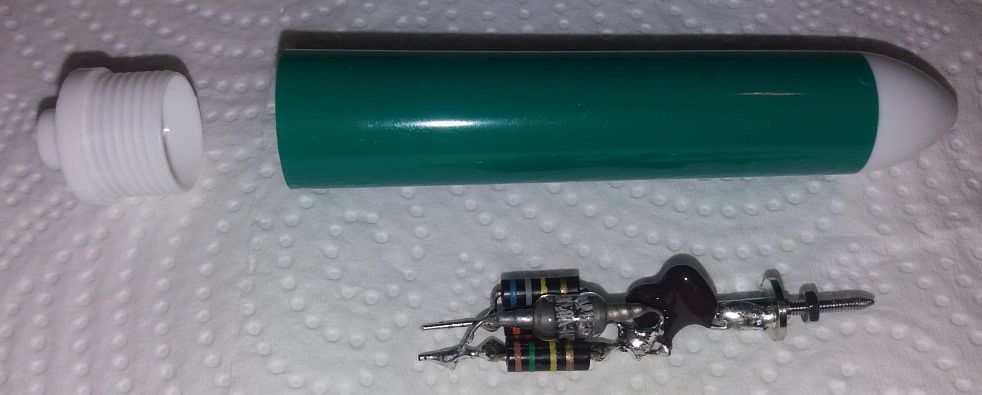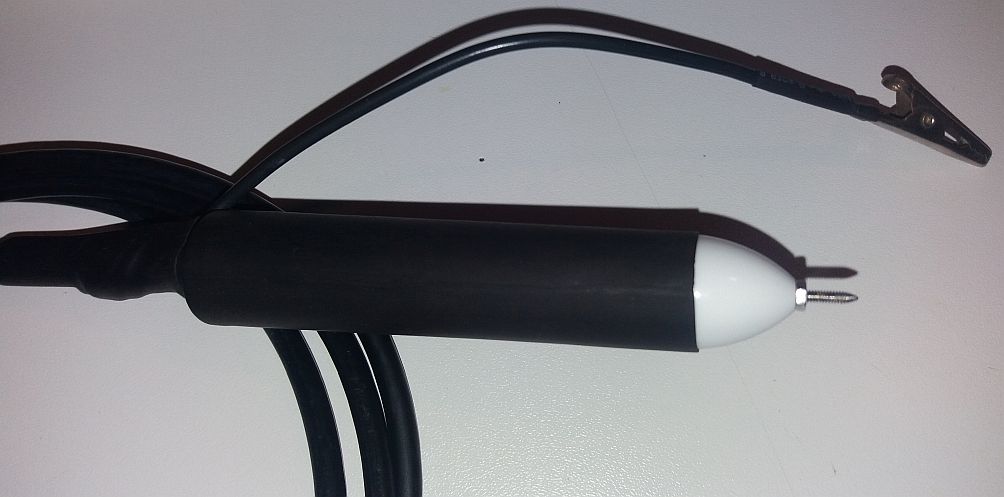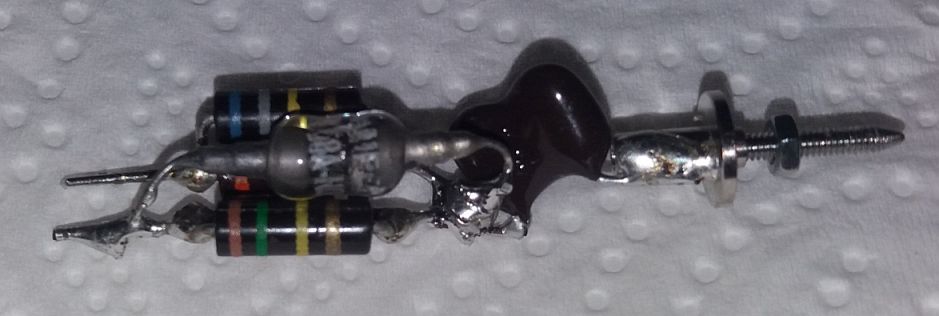
The probe
has been build using a thick pen for its body and the probe tip is just
a stainless screw, made conical at its one end. Because it is a screw,
you can easily temporarily attach a small cable/aligator to it, if you
want the probe to be held in place (eg clip on a component lead)
without holding it. The tip is removable
and it is attached to the body using a nut externally and a solderable
disc-shaped nut internally. Although no SMD components were used, the
components leads were kept reasonably short. A length of cheap RG-58
cable is soldered directly to the probe output connections without any
connector, as the cable is part of the circuit. I measured a piece of
cable that had a shunt capacitance of 140pF. This cable is taken out of
the probe using a hole in the white screw plastic you see in the left
of the picture below. The cable is secured firmly in the hole, so that
it does not move internally, to prevent damage in the circuit that is
soldered to it.






